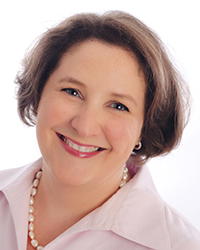

- Séverine Le Blévennec
- Global Head of Treasury, Aliaxis

- Tom Alford
- Deputy Editor, Treasury Management International
It took Belgium-based Aliaxis, a global leader in fluid management solutions, 15 months to transform its 10-country LATAM treasury operations from a collection of disparate processes into a sleek, centralised powerhouse. The project, which earned the team the TMI Best in Class Treasury – LaTAm Award 2025, is described in detail here by Séverine Le Blévennec, Global Head of Treasury, Aliaxis.
With 10 active countries in its LatAm portfolio, Aliaxis’ treasury operations, managed by its Costa Rica shared service centre (SSC), were carried out with a multitude of processes and systems. This, notes Le Blévennec, meant teams were “doing the best they could” without the benefit of co-ordinated policies, processes and, indeed, up-to-date systems, with the one ERP connecting the region, for instance, not connected to a payment hub.
And with annual trade flows in the region subject to more volatility than in other territories, individual entities were placing regular ad hoc funding calls on treasury HQ in Brussels. Despite regular complex capitalisation rounds, the loans that were made were often not tax efficient, and were either beyond the technical reach of the Aliaxis IHB or subject to local cash controls. This led cash-rich entities sometimes to lend to their cash-poor counterparts, creating new and often unhedgeable uncorrelated FX exposures.
“In terms of cash management, it was mostly paper-based,” continues Le Blévennec. “We had too many different banks – around 25 – sometimes one bank per region of a country. All local currency payments were performed with file downloads or uploads from or into numerous e-banking systems. And all foreign currency payments - in USD - were inputted manually because the ERP didn’t store all the required data elements.
Bank rationalisation in the region was essential. However, in setting out to reduce the unsustainable numbers, caution was required due to complicated local payroll payment rules. “Depending on the country, paying wages through certain banks forces the employee to have their account with the same bank. We did not want our changes to be too disruptive,” explains Le Blévennec.
What’s more, she notes that where some employees were granted material benefits by these banks (such as lower rates on their mortgages, or the offer of low-rate advances), treasury had to be especially sensitive to preserve those benefits.
Unlock, tap in, and connect
Having arrived at Aliaxis in June 2021, Le Blévennec had quickly formulated an ambitious vision to build a centralised treasury organisation with common policies, processes and systems across the business. This started with the implementation of the FIS Integrity TMS, and its Trax payment factory solution. With the IHB rework completed, the LatAm region overhaul was firmly in her sights.
“Our LatAm treasury was functional but far from optimal, as it lacked structure,” she reflects. “I could tell that the potential and the will was there – we just needed the right approach to unlock it.” To help shape matters, while paying heed to local sensitivities, she hired PwC, conveniently tapping into its Brussels-based, Treasury Centre of Excellence.
The first act of revival for the LatAm region was to gain full cash visibility. The practical work began in earnest in late 2022 with the global implementation of the TMS. FIS Integrity materially decreased the region’s cash-reporting dependency on Excel, notes Le Blévennec. “Gaining global daily cash visibility into the TMS is always a major milestone when climbing the treasury organisation maturity ladder. But it is particularly helpful for a region that often exhibits cash flow volatility.”
The initial phase also leveraged part of LatAm’s legacy technology. With that single, though outdated, instance of SAP covering the entire region, it presented the project team with an opportunity to start making data management headway. The aim was to integrate this with the TMS. However, it was soon realised that supplier master data in SAP had not been reviewed “for a long time”.
It transpired that of the 50,000-plus suppliers in the database, only 11,300 were active. The payment master data for international suppliers was not even recorded in SAP. And with no specifications available for each of Aliaxis’ 10 countries, many fields were simply missing. All had to be researched, created and then populated with the correct data. This alone was a huge undertaking for which the “extraordinary commitment” of the SSC staff was a critical component.
While this work was progressing, a project was taking shape to centralise LatAm payments (and adopt ISO 20022 messaging) in Costa Rica. The country was chosen for its political and economic stability, and readily available expertise in this space. Treasury’s rejuvenation plans had to connect with, but not disrupt, this key effort.
When she first arrived in the function, Le Blévennec had purposefully “asked hundreds of questions, in hours of interviews” with local treasury personnel. “They were very patient,” she recalls. “As Global Head of Treasury, I needed to connect with them all, and understand their strengths and weaknesses, and any obstacles in their path.”
When in mid-2022, it was decided to launch a LatAm Bank RFP, an even deeper understanding of regional and local requirements was required. “We brought these elements together – translating them into around 800 questions per country – so we could map both commonalities and country-specifics, and present them, as an RFP, to the six preselected banks.”
The vast catalogue of anomalies included local salary payments, and cash collections where in some cases cash was physically deposited at a local supermarket, to be credited on the company bank account. In every case, it was deemed essential to attend to these, while at same time promote a full digitalisation agenda from the outset.
Value the expert opinions
The banks’ responses were analysed using bespoke PwC software. This could easily detect, using previous country and bank RFP responses, the degree to which each prospect was able to meet local needs. It even revealed where claims to be able to deliver were, in fact, not possible. As a tool to help decide which banks have the most appropriate solutions, Le Blévennec enthuses: “It’s pretty useful”.
Following assessment, she set up and attended meetings with the four short-listed banks. These took place over a 10-day stretch in Costa Rica, and included Aliaxis’ regional CFO, controller and treasurer, as well as consultants from PwC. The aim was to strip away the sales pitches and get to the facts. “We had our own experts in the room – our regional treasurer is extremely knowledgeable and knows all the regional nuances,” she reveals.
Banks were scored on 13 variously-weighted elements, including their capacity to provide funding not only to the local affiliates but also to the IHB via the group RCF – something none of the regional banks had previously participated in.
Although initially the plan was to run with one bank per country, in part to limit the number of platforms being used, thorough investigation revealed that this would not be possible, given some of the specific requirements (around salary payments and physical collections, for example). This led Aliaxis to select three core partners (Citi, BBVA and BAC), together providing one international bank and one regional or local bank representation in each of the 10 countries.
The technical implementation of the selected banks was run from Brussels, with the Costa Rican SSC acting as a local resource alongside an on-the-ground legal advisor charged with reviewing the 900-plus required contract documents before their physical execution.
Thinking ahead
Selecting a common platform globally for payments is often about scalability and future-proofing, and these were high on the agenda for Le Blévennec. “We reviewed governance globally, asking questions, for example, about delegation of authority to approve payments, and of course we pushed for electronic payments wherever possible,” she explains. “We also wanted to optimise our liquidity and decrease interest expense in the region.”
By greatly reducing its banking panel, Aliaxis was looking to provide funding for each country in its local currency, and also provide credit lines for the hedging of commercial FX exposure. What’s more, by using a primary banking partner for the region – gaining economies of scale with Citi – it pushed Aliaxis further up the ladder in terms of service-level delivery, as well as opening up that bank’s valuable region-wide on-the-ground banking advice and set of advanced digital tools.
The changes naturally most affected those who worked in the region. The constant involvement of the LatAm treasury team in the design, build and implementation of the solution led to a strong alignment and quick adoption of the new working patterns, notes Le Blévennec. “They had participated in the ‘beauty parade of banks’, so they understood from the start what the changes could bring to them,” she explains. “That helped when we came to the implementation; they knew it would work for them because we’d already addressed every issue they raised, and validated every solution. The local team was definitely not a passive receiver in this project, and that helped enormously with progress.”
Not that the team members were free of challenges. Indeed, admits Le Blévennec, the implementation was constrained by limited local IT resources with a long agenda of competing projects. When tackling the country-by-country rebuild of the master database, it absorbed much of their time; forward planning was therefore crucial. The normal bank suggestion of tackling one country at a time was ignored, she states.
“We said, ‘No; we want to know the full requirements for all 10 countries now’. We have one SAP, and we needed to know every field in advance so we could better manage field creation and allocation, and develop a framework that would not need to be recoded every time new fields came to light as we rolled out new countries.”
Joining the dots
With the legacy ERP not connected to any internal system, this had to be established via SAP’s Cloud Platform Integration (CPI) internal routing system. “We then had to connect to the FIS environment hosting Trax. A lot of the payments hub implementation efforts consisted in developing and testing the dozens of payment formats required to address the region’s needs,” comments Le Blévennec.
Even more effort was needed for automation of the payroll files. These had been encryption-free files supplied by local payroll providers to the company for further manual upload into e-banking for processing. All payroll suppliers are now providing XML files, encrypted and electronically signed. In the worst cases, the transition has taken around two years, but all are now onboard.
The effort of the chosen banks is duly acknowledged. However, while Le Blévennec lauds Citi for having provided “a fantastic project management team”, local banking has been “more challenging”. Claims to have previously executed Swift connectivity and multi-country implementations, for example, seem to have been overstated, and response times to queries were at times “not what we would have hoped for”.
Despite the need to work across expansive time differences (the eight-hour difference between Brussels and Costa Rica, for example), it was still deemed best to co-ordinate via head office. “I could validate every decision and ensure consistency with my global vision, rather than having to correct any derailment if managed locally,” Le Blévennec explains.
This was an important detail. “Sometimes a decision on a specific aspect may not seem important,” she continues. “A bank may ask if the preference is for batch or individual transaction booking. To some, it’s a marginal decision. But with transaction-by-transaction, there is an opportunity to check in the TMS for payments notifications, and accurately assess our funding requirements. Then such a decision becomes serious.”
It’s clear that attention to detail has been important for the team. Indeed, says Le Blévennec, “we didn’t want just to complete this project, we wanted to do it right and make a positive difference on the team’s day-to-day user-experience and productivity, as well as the overall control environment”. While this meant sometimes “having to go back to the drawing board”, taking the time to do it right has paid off.
Presenting fresh options, leaving no-one behind
By reducing the number of core banks from 25 to three, it has also lowered counterparty risk while boosting cyber-security. The level of investment possible by Citi in these essential components of modern banking will, says Le Blévennec, far outstrip that of smaller local banks.
Process automation – 98% of payments are now automated; there is 100% daily automated cash visibility – has removed the likelihood of human error and even payment fraud. This gives local teams the agility to run payment files and reports whenever needed. The opportunity to regroup payments in a more structured manner has also been fully leveraged.
“From a credit perspective, it has made a huge difference,” adds Le Blévennec. “We now have working capital credit lines in each country, in the currency that each needs, replacing existing intercompany loans in USD. This has eliminated millions in local unhedged FX exposures, and the remaining real exposure to FX – those linked to commercial transactions – can be managed more efficiently.”
Accounts have also been set up in the US for all USD payments. These are now executed locally, which in terms of cost is “a fraction of what it was” when local teams were sending each individual USD payment from their local accounts as cross-border payments. “As a result of the refinancing and the tools from Citi, we have materially decreased our external interest expenses. And, of course, it’s been better for pricing too because we have become a more substantial customer.”
The work by treasury is also having a positive impact on other functions. Having completely cleaned up supplier master data, the procurement team is better able to manage its activities. The next step will be to automate bank account reconciliation and cash application. “All bank statements are available in an electronic format and we are working with the team to upload this data into their ERP,” notes Le Blévennec. “They will need to work on that development in SAP – we can provide it in XML, but if they need another format, we can transform it.”
With the possibility of automated cash application comes the prospect of deploying AI and ML, she continues. “You can imagine for 10 countries that we can make huge economies of scale here. We’ll also be freeing up local time to focus on unreconciled items and value-adding analysis, rather than being bogged down by mundane manual work.”
Treasury is advising on potential further processes automation, introducing local teams to vendors, and organising product demonstrations. Brussels has also been encouraging process exploration. “It is important for us to play our advisor and catalyst role,” states Le Blévennec. “After all, that’s what ‘global centre of excellence’ means.”
Team work ‘makes life easier’ for all
This project has truly been a collaborative piece of work. Internally, some 65 people have been involved to date. “It’s been a huge effort, with many different elements to implement,” Le Blévennec acknowledges. “Project management and frequent communication has been the key to our success. I’ve been speaking to most at least weekly, and often daily. We were blessed to be supported by the PwC Treasury consulting team. Their expertise, engagement and strong project management skills really made a difference. It’s been a close relationship, despite the time difference, and it has worked really well.”
By meeting the local teams and learning the details and complexities of their work, she says it has given her “organic knowledge” of the issues they have been facing. “It enabled me to offer much better advice, and to know how best to play the different cards I had in my hands.”
The high level of cooperation has also led to a better understanding of the reasons for change. “The local team sees the consistency flowing from what we have built together. They see how it’s saving them a lot of time and stress, decreasing risk in the region, and generally making life easier for everyone.”
No compromise
Of course, there will be many other companies looking to reshape remote treasury operations. The first piece of advice Le Blévennec offers is “to really listen to the people, their constraints and concerns”. It’s vital, she asserts, “to make sure that you address every single local requirement, because if you don’t, it will come back to bite you”.
It’s also important to have a clear direction and end goal when building out the technology ecosystem. Look for scalability and future-proofing. “Don’t compromise on this,” she counsels. “You’ll need all the skills for project management internally to be able to advance the project in an environment of limited local resources.”
She also encourages treasurers taking on a project of this nature to have access to a strong global bank relationship manager, “in case matters are derailing or you need escalation”. In fact, she adds, “put as much burden on the banks as you need to. Let them do their homework; they should be serving you, not the other way round.”
As with all substantial treasury projects, Le Blévennec urges those involved to be prepared for aspects beyond their immediate control. “Accept that those will add time, but never ignore them, and certainly don’t give up.” And with that approach, the prospect of creating a Best-in-Class treasury solution is, she says, “entirely feasible”.




